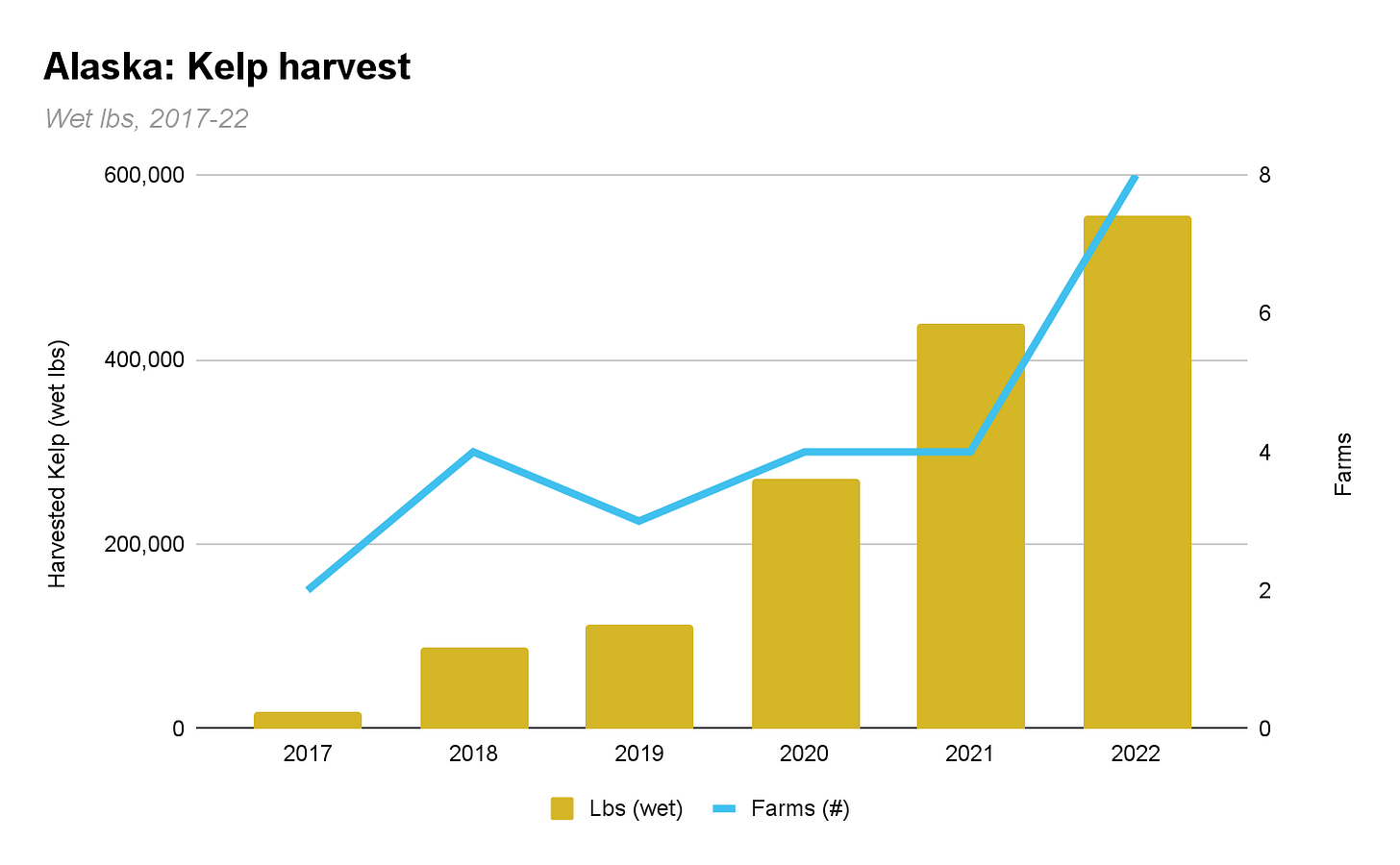Alaska kelp harvest grows by 27%, reaches half a million pounds in 2022
Results from our 2022 survey of Alaskan kelp grower
Last week the EDA announced a whopping $49m grant to promote seaweed and shellfish mariculture in southeast Alaska. This was a huge effort led by the Southeast Conference bringing together all of the important players. It’s a big vote of confidence in Alaska’s potential to be a major seaweed producer and we are proud to be lending our support to this important initiative.
On hearing this news, some of you might be thinking: how much seaweed does Alaska produce today? This is a question we frequently hear from our customers. To answer this question, we dug into the historical data and surveyed all the leading growers in the state to find out how much they harvested in 2022.
For the survey, we reached out to growers in our network and asked the ever helpful folks at McKinley Research Group to connect us with a few more. In total we spoke to 8 active growers and heard back from 6 of them (if we missed you, please email us, we’d love to hear from you!). All the data was self-reported and we know of a few new farmers who did not respond, so we are probably undercounting a bit. Okay, enough methodology, here’s what we found out.
In 2022, growers in Alaska harvested a reported 556,750 wet lbs (253 wet metric tons), up ~27% from 2021 and more than 30x production five years ago. This rapid growth reflects both the entry of new growers as well as much improved yields on existing farms over the past few years as growers optimize their operations.
Source: Macro Oceans AK 2022 Survey, McKinley Research Group
We also asked farmers what species they were growing. The vast majority are growing sugar kelp (Saccharina latissima). In addition, most of this year’s harvest was frozen before being sold on to food-focussed customers for further processing. There was, however, a noticeable uptick in volumes going to animal feed (reportedly ~80,000 lbs) and biostimulant fertilizers.
Source: Macro Oceans AK 2022 Survey
Although the Alaskan seaweed industry is still small-scale (>95% of all cultivated seaweed is produced in Asia), it is worth remembering that there are currently only 8 active farms out of 24 fully permitted with an additional 23 under review. That means we’re likely to see a further rapid increase in Alaska production, especially as new farmers put gear in the water and existing farms improve their yields. And there is great potential for further expansion given Alaska’s enormous coastline, established fishing industry and its supportive regulations.
So from our perspective, the trend is clear: if you want to understand the future of seaweed farming in North America, you have to see what’s going on in Alaska.



